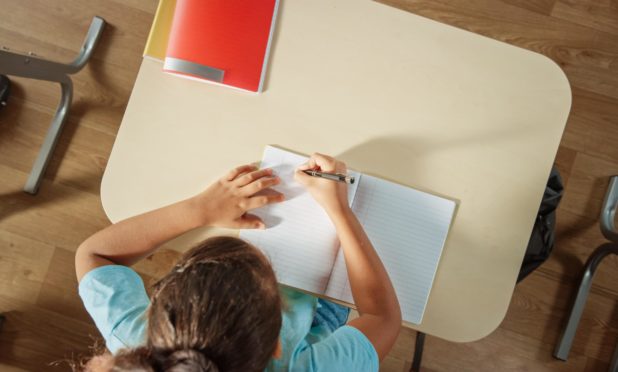A higher than average proportion of children are still attending school in Tayside, while most pupils learn from home.
With increased infection levels and new variants of Covid-19, schools reopened only to children of key workers and vulnerable children this term, and across Scotland 6% to 7% of all pupils were in school during the second week.
Unlike in last year’s lockdown when childcare hubs were set up in selected schools, pupils are able to go to their own school.
The Scottish Government is now publishing statistics on school attendance from January 13.
How many children are in school in each area?
We took a look at the figures to see how many children are in school in Tayside and Fife and compared those for Tuesday, January 19, the latest data available.
Across Scotland, 7.2% of pupils attended school that day.
In Dundee council-run primary and secondary schools 13.3% of pupils were present last Tuesday.
That is the highest proportion so far, with the lowest 10.6% on January 15.
A Dundee City Council spokesman said: “We carefully monitor the numbers of pupils who are attending our nurseries and schools on a daily basis.
“The city council follows national guidance from the Scottish Government around those who can attend during this lockdown which includes vulnerable children and the children of key workers.”
We carefully monitor the numbers of pupils who are attending our nurseries and schools on a daily basis.”
Dundee City Council
Angus schools welcomed 9.3% of the region’s pupils.
Their school attendance rate has fluctuated between 8.1% and 9.6%.
Perthshire and Kinross schools saw 8.3% of pupils in class.
Attendance dipped to 5.8% on January 14 but rose steadily to sit at 8.3% on both Monday and Tuesday of last week.
Fife schools were equal to the national average of 7.2%.
The kingdom’s school attendance has been more steady, dipping to 6.4% on January 14 then increasing slightly.
We must keep these numbers to an absolute minimum because the whole idea of having our schools closed is that we can help stop the transmission.”
Carrie Lindsay, Fife Council
This is equivalent to over 4,000 pupils in school each day, according to Carrie Lindsay, Fife Council’s executive director of education and children’s services.
She outlined the provision to the authority’s education and children’s services committee.
She said: “Not all children are attending every day, often key workers will only want their child to attend school when they are working.
“We must keep these numbers to an absolute minimum because the whole idea of having our schools closed is that we can help stop the transmission.
“If we increase our numbers significantly then the community transmission will increase too.”
What else do we know about school attendance?
It is estimated that across the country 63% of children attending school are those of key workers, with 37% vulnerable children.
Unsurprisingly, attendance is highest in schools for pupils with additional support needs, which was at 17.5%.
Also to be expected, attendance was higher in primary schools than in secondary schools, at 10% and 3.1% respectively.
Attendance was lowest, 5.9%, among the most affluent fifth of the population and was 7.2% for the most deprived 20%. It ranged between 7.1% and 7.9% for those in the three deprivation levels between.
What is the advice for schools?
Meanwhile guidance states that in deciding which children can attend school, local authorities and schools should have regard to the overarching aim of reducing the number of pupils in school as far as possible.
Schools Catchment Checker: Find out about the schools in your catchment area in Tayside and Fife










